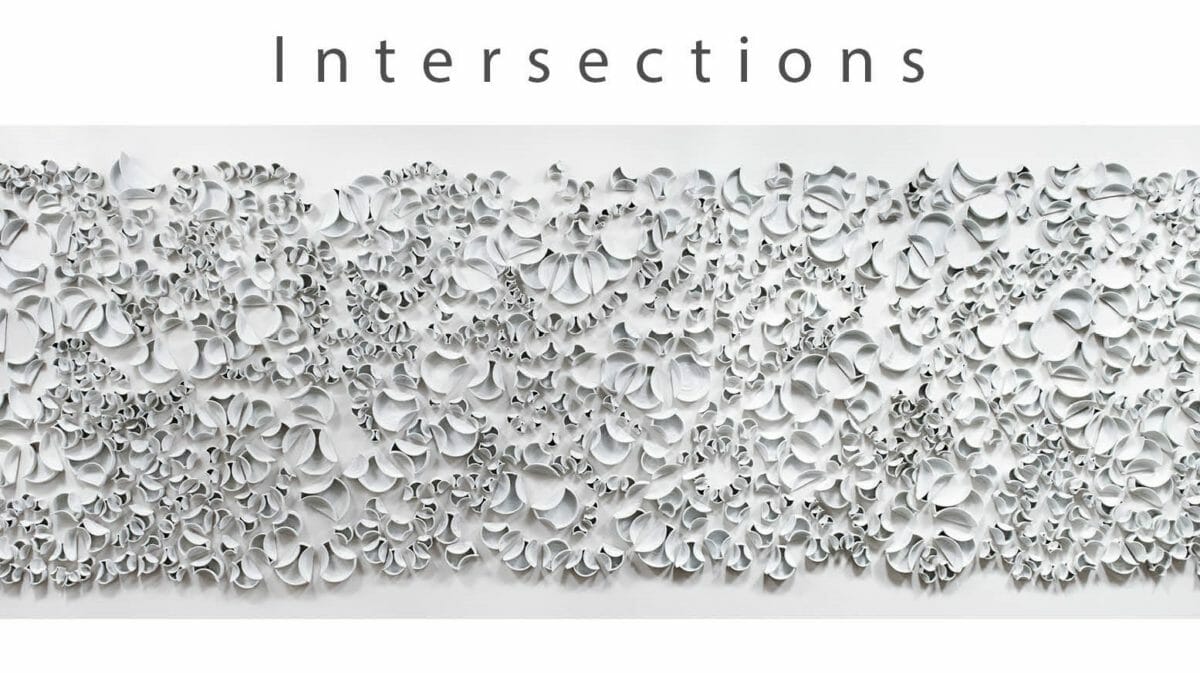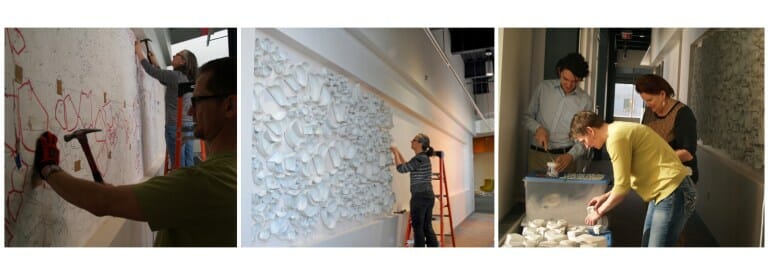Creating New Intersections: Blending Art with Community
Intersections, an art installation by the talented Monice Rudquist, embodies that the gifts of donation occur at the intersections of loss and life, humanity and science, sorrow and hope.

About Intersections
The journey of donation and transplantation is filled with elements of loss and healing. Clay artist Monica Rudquist’s porcelain installation echoes that essence. As a donor family suffers the tragedy of losing a loved one, what they knew to be whole and complete becomes fractured. Similarly, the vessels Monica formed on her potter’s wheel as a complete circle are no longer complete. Intentionally altered into fragments and reshaped, each piece comes together as a new form leaving the scars of tragedy, always present and visible.
Each piece in this artwork stands on its own as a familiar and intimate vessel and yet is part of something bigger as the shapes are joined in unexpected ways. Just as one donor shares life with many unknown recipients, many fragments come together to form a beginning. A space remains between the individual pieces, giving honor to the space between as much as the space contained within.
It is fitting the artist chose porcelain as her medium to convey her message, as porcelain is a fluid and responsive substance that becomes not only strong after it is fired but is everlasting. It is always the hope that donation provides a grieving family with strength to face the days ahead while providing recipients with renewed health.
The gifts of donation occur at the intersections of loss and life, humanity and science, sorrow and hope. Monica’s installation is in a location where the building intersects with the healing garden and where the daily activity of team members intersects with the calming flow of the Mississippi River.
Just as the experience with donation and transplant is similar and uniquely personal for all those who touch it, so too will each viewer take in Intersection though their own experience. Viewed from the hall, through the window, in sections, as a whole or in part – each provides either an intimacy with smaller areas or the power of the whole as a complete unit. In the same way a donor family member, a transplant recipient, and a donation professional experience the mission of donation through their own lens, each viewer of Intersection creates their own dialogue with the work.
Building Intersections
Monica created 1,000 porcelain cylinders that she then cut and altered to be ready for assembly. The installation soon became a collaborative effort as so many LifeSource team members requested to help with the two-week-long assembly; shifts were formed to accommodate all those willing to help. In its now permanent home, the installation spans 35 feet long.

“What struck me at the time was how vested everyone became in the piece as we worked together. After the installation, it felt as though Intersections had become its own and found its home at LifeSource – a little like watching your child grow up. They begin as part of you; then, they become their own person, stronger and more wonderful than you could ever have imagined.”
– Monica Rudquist
About the Artist
Monica Rudquist is a studio artist living in Minneapolis, Minnesota and currently teaches at St. Catherine University in St. Paul. To see more you can follow her on Facebook and Instagram at Monica Rudquist Clay or visit https://monicarudquist.com.
 Skip to main content
Skip to main content
